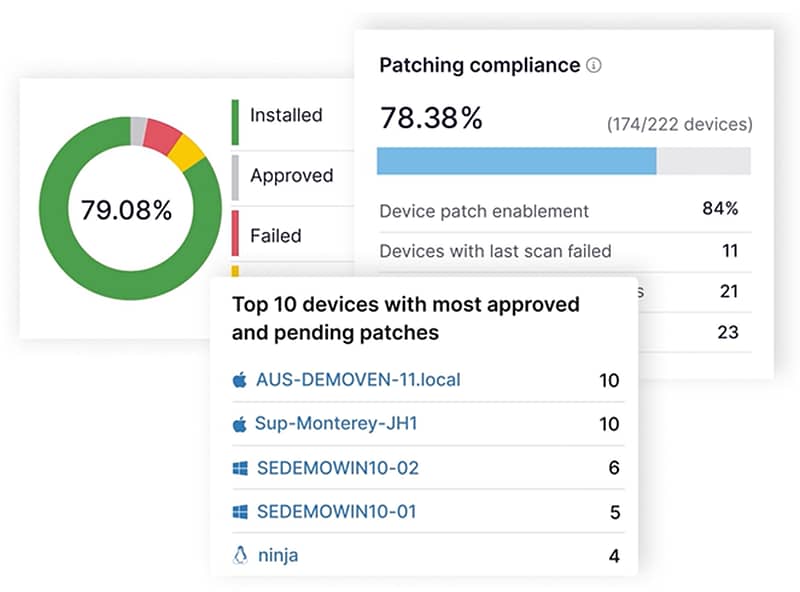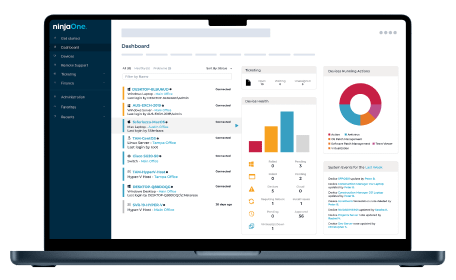NinjaOne's Patch Automation for Seamless IT Management

Unlock the potential of NinjaOne’s patch automation software for efficient IT management
Effortless Patching Automation
Enhanced Security
Improved System Performance
Scalable Solutions
Compliance Assurance
Managed Automation for IT Efficiency
Discover NinjaOne’s patch automation tool with powerful capabilities for seamless IT management
Autonomous Patching
Real-Time Patch Status
Customizable Patch Policies
Comprehensive Reporting
Integration with Existing Tools
Scheduled Patch Deployment
Versatile Patch Management for Diverse IT Needs
Streamlined IT for Government Agencies
Secure Systems for Healthcare Providers
Compliance and Efficiency for Financial Institutions
Simplify Your Patch Management Today!

Patch Automation FAQs
What is patch automation?
Patch automation is the process of using software tools to automatically deploy and manage patches across IT systems. With patch automation, organizations can streamline their patch management process, ensuring that all devices stay up-to-date with the latest security patches and updates without requiring manual intervention. This not only reduces the risk of security vulnerabilities but also helps improve system reliability and performance.
How to automate server patching?
To automate server patching, use a patch automation tool that allows you to schedule, deploy, and monitor patches across your servers with minimal manual effort. With the right software, you can define patching policies, set deployment schedules, and receive real-time status updates, ensuring your servers remain secure and compliant. Automated server patching helps reduce the risk of vulnerabilities, improve performance, and save time for IT teams.
Why is patch automation important?
Patch automation is crucial because it ensures timely and consistent updates across all systems, minimizing security vulnerabilities and enhancing system performance. By automating the patching process, IT teams can focus on more strategic tasks while ensuring that patches are deployed without delay, reducing the risk of cyberattacks. Additionally, patch management automation helps maintain compliance with industry regulations and reduces the manual effort required for patch deployment, leading to greater operational efficiency.
Patch Automation vs. Manual Patching: What's the Difference?
The main difference between patch automation and manual patching lies in the level of intervention required. Patch automation allows IT teams to automatically deploy patches according to pre-set schedules, ensuring that updates are applied consistently and promptly across systems with minimal human effort. In contrast, manual patching requires IT staff to manually check, approve, and install patches, which can be time-consuming, error-prone, and prone to delays. Automation enhances efficiency, reduces security risks, and improves system uptime compared to the more labor-intensive manual process.
Related Resources
How to Choose a Patch Management Solution?
What is a Computer Patch?
8 Patch Management Best Practices
Explore the best practices in patch management to prevent cyberattacks.


